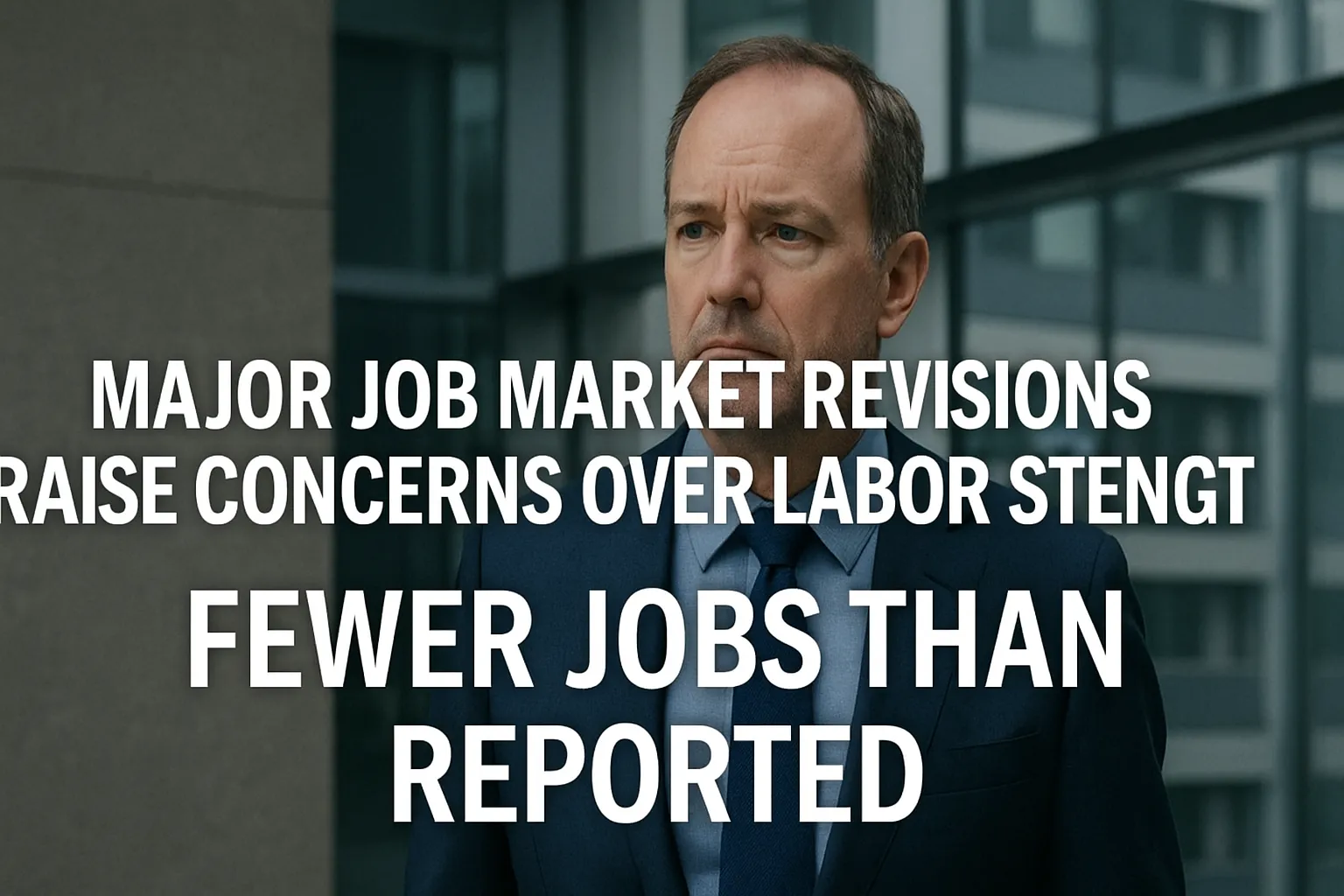U.S. Employers Added Far Fewer Jobs Than Previously Reported
10.09.2025
Major Job Market Revisions Raise Concerns Over Labor Strength
Fewer Jobs Than Reported
Preliminary revisions suggest the U.S. economy may have created nearly one million fewer jobs in 2024 and early 2025 than initially estimated. The updated figures cast doubt on the labor market’s strength, which until recently had been seen as one of the economy’s few bright spots.
The Bureau of Labor Statistics (BLS) released the revised data as part of its annual “benchmarking” process, which aligns monthly estimates with more comprehensive state unemployment records. The downward revision comes at a politically sensitive time, just weeks after President Trump dismissed the agency’s top official following a separate round of negative corrections.
Scale of the Adjustment
According to the new report, employers added 911,000 fewer jobs in the 12 months through March than previously reported. That means job growth totaled around 850,000 positions—roughly half of the earlier estimate.
The revision spans the closing months of President Biden’s term and the early months of Trump’s second presidency, though the agency did not specify when the overcounting occurred. While the adjustment is significant, many analysts had anticipated a steep downward shift based on prior quarterly data.
Implications for the Economy
Although the revisions don’t directly change post-March employment figures, the magnitude of the overestimate suggests that more recent job gains may also be inflated. This development could weigh heavily on policymakers at the Federal Reserve, who have been watching for signs of cooling in the labor market.
Fed Governor Christopher J. Waller highlighted the expected revisions in a speech last month as justification for supporting interest rate cuts. That case strengthened further after August’s weak payroll report, which showed just 22,000 jobs added and unemployment climbing to 4.3 percent, the highest in nearly four years.

Why Revisions Matter
The BLS revises data annually because monthly payroll numbers are survey-based and inherently approximate. Each year, estimates are reconciled against more authoritative state records. While revisions are usually small, this marks the second consecutive year of major adjustments. The 2024 benchmarking lowered job growth by nearly 600,000; the 2025 revision would be the largest in percentage terms since 2009.
Economists note that such discrepancies often emerge during economic turning points when hiring patterns shift quickly. Pandemic-related business formation spikes may have distorted the government’s models, leading to an inflated picture of job creation.
Sector Breakdown
The revisions were broad, but particularly severe in services industries. Leisure and hospitality employment was adjusted down by 176,000 jobs, retail shifted from slight gains to net losses, and the information sector showed deeper cuts than previously believed.
Political Fallout and Leadership Struggles
The White House has seized on the revisions as evidence of flaws within the BLS, backing Trump’s decision to remove former director Erika McEntarfer. The administration has nominated E.J. Antoni, a vocal critic of the agency, to take over. Officials argue new leadership is needed to rebuild confidence in federal labor statistics and modernize outdated survey methods.
Critics, however, say such claims are unfair. Independent experts note the agency has long been constrained by budget cuts under both parties. Trump’s current budget proposal includes further reductions, which economists warn would worsen data quality.
Calls for Reform and Funding
Professional organizations have emphasized that consistent funding is critical to improving accuracy. The National Association of Business Economists recently argued that with adequate resources, statistical agencies could modernize data collection, reduce errors, and produce more reliable early estimates.





Leave a Comments